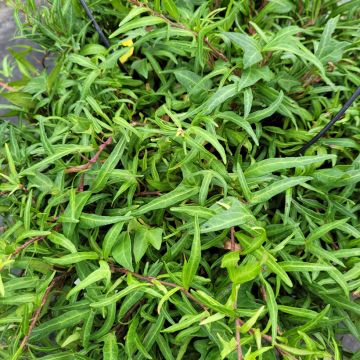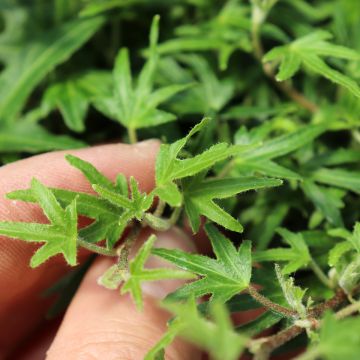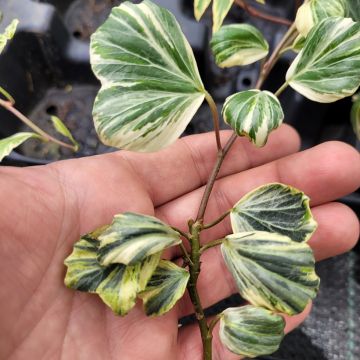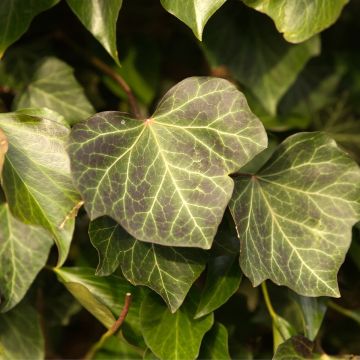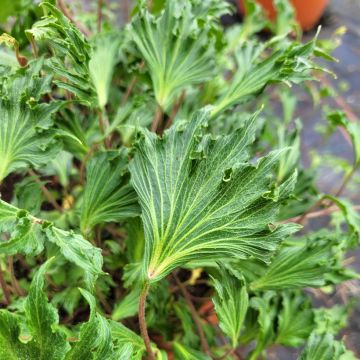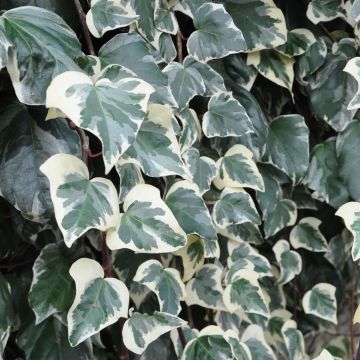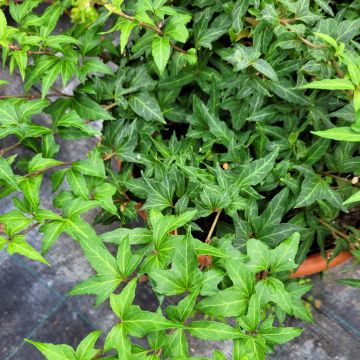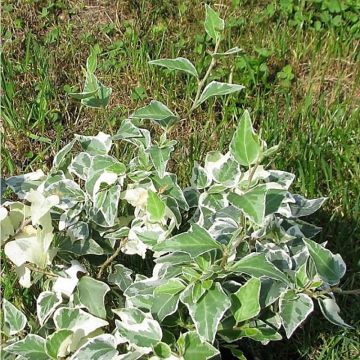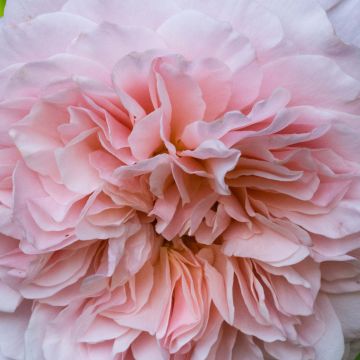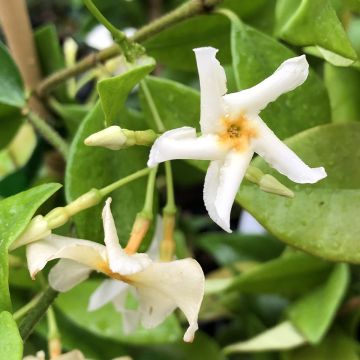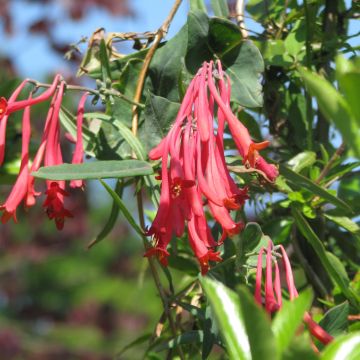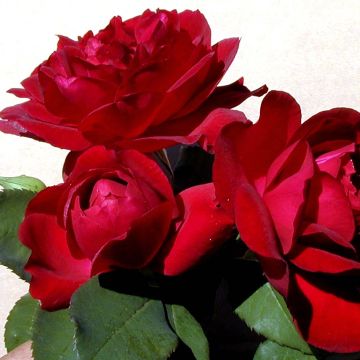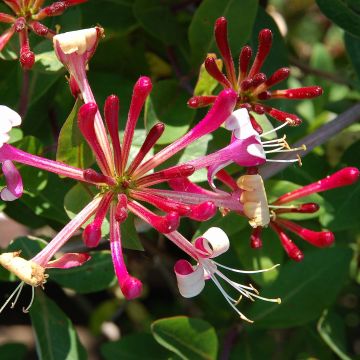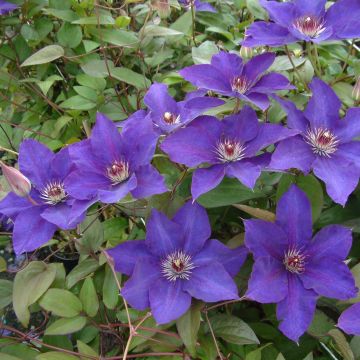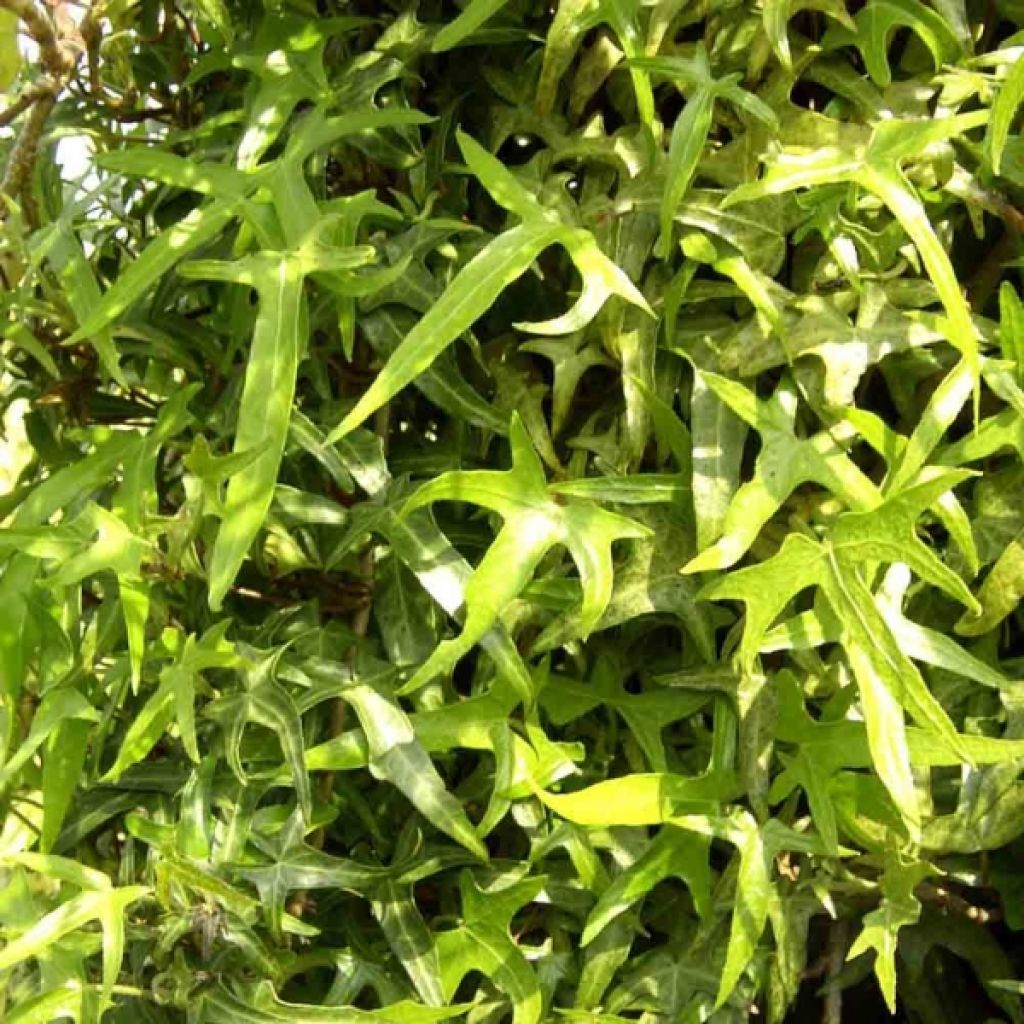

Hedera helix Sagittifolia - Common Ivy
Hedera helix Sagittifolia - Common Ivy
Hedera helix Sagittifolia
English Ivy, Common Ivy, European Ivy
I received common ivy instead of sagittifolia and the customer service insisted otherwise despite the photo.
Stéphane, 13/04/2024
This item cannot be shipped to the selected country
Delivery charge from €5.90
Delivery charge from €5.90
More information
Schedule delivery date,
and select date in basket
This plant carries a 6 months recovery warranty
More information
We guarantee the quality of our plants for a full growing cycle, and will replace at our expense any plant that fails to recover under normal climatic and planting conditions.
From €5.90 for pickup delivery and €6.90 for home delivery
Express home delivery from €8.90.
From €5.90 for pickup delivery and €6.90 for home delivery
Express home delivery from €8.90.

Does this plant fit my garden?
Set up your Plantfit profile →
Description
Hedera helix Sagittifolia is a hardy ornamental Ivy characterised by its evergreen foliage, tender green, with 5 very elongated lobes. An excellent climbing plant, it can cling to any support to form a beautiful green wall or run along the ground to create an elegant ground cover. It prefers deep soil but once established, it shows resistance to drought.
The sagittate (arrow shaped) leaved ivy belongs to the Araliaceae family - ivy is actually one of the few European species of this family, which is mostly represented in tropical and subtropical climates. Common ivy grows in all types of undergrowth, where it can be seen climbing tree trunks or running along the ground (these are actually two ways to use it in the garden, as we will see later). It is one of the easiest species to recognise, with its persistent, leathery leaves, quite lobed, and with well-marked veins. However, it is less known that this is a juvenile stage, as when it reaches the top of its support (a wall, a tree...), ivy becomes an adult and then produces entire leaves without lobes. Between September and November, the ivy flowers (only if it is adult), forming small white-green umbels. Although not particularly decorative, these flowers are extremely useful for pollinators, who find a late source of nectar there. In addition, these flowers later produce small black berries, much appreciated by birds (this is again an unexpected source of food during winter) but toxic to humans. Ivy is capable of clinging on its own, thanks to its sturdy climbing roots carried by the young stems.
Hedera 'Sagittifolia' is a superb variety characterised by its medium-sized leaves, green with lighter veins, and divided into 5 lobes, with one central lobe being very elongated. It grows at a moderate rate and reaches about 4 metres (13 feet) in height and 3 metres (10 feet) in width under favourable conditions.
The cultivation of sagittate-leaved ivy is very easy: give it a deep, even chalky or clayey soil, moist to wet, and it will establish itself permanently. It is also very hardy. However, note that its growth, especially at the beginning, is rather slow, so do not hesitate to press a few stems against the ground to encourage rooting (this is called layering). It prefers shade or partial shade, at least in the first few years, but once established, it shows great adaptability, even when the soil is slightly dry.
It can be used as a climber on a large tree or on a wall, but it can also be an excellent ground cover in the undergrowth or in a semi-shaded bed, or even trailing over the top of a low wall. It can also be grown in a large pot, but watering should be monitored. The elegance of its finely lobed leaves makes it a particularly valuable choice for a scene that is both wild and refined.
Let's dispel some misconceptions: ivy, contrary to popular belief, does not parasitise trees (it simply uses them as support). An old tree covered in ivy may fall, but it is generally the weight of the climber that bends an already decaying trunk. Furthermore, it will only damage a wall if the plaster is already degraded and cracked. Therefore, there is no risk in letting it climb a healthy wall. Along with its ecological usefulness, it is a plant that would be a shame to do without!
Report an error about the product description
Hedera helix Sagittifolia - Common Ivy in pictures
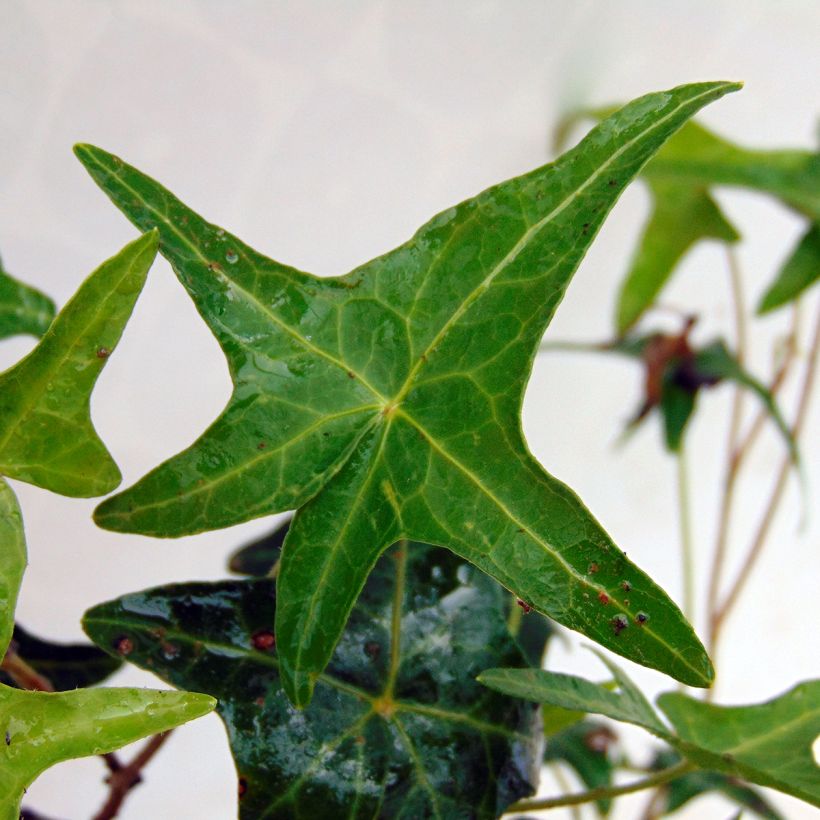

Plant habit
Flowering
Foliage
Botanical data
Hedera
helix
Sagittifolia
Araliaceae
English Ivy, Common Ivy, European Ivy
Cultivar or hybrid
Other Hedera - Ivy
Planting and care
Hedera helix Sagittifolia, which is easy to cultivate, can be planted all year round in fertile, moist but well-drained soil, preferably against a wall in a sheltered position away from cold winds. To promote the growth of young shoots, fix the first ones to the ground (layering). Do not hesitate to rejuvenate the plant by removing old branches. Prune regularly to shape it. For container cultivation, mix 7 parts of ordinary soil, 3 parts of compost, and 2 parts of sand. Water regularly during the growing season. Keep the substrate moist but not overly wet during winter.
Planting period
Intended location
Care
-
, onOrder confirmed
Reply from on Promesse de fleurs
Foolproof climbers
Haven't found what you were looking for?
Hardiness is the lowest winter temperature a plant can endure without suffering serious damage or even dying. However, hardiness is affected by location (a sheltered area, such as a patio), protection (winter cover) and soil type (hardiness is improved by well-drained soil).

Photo Sharing Terms & Conditions
In order to encourage gardeners to interact and share their experiences, Promesse de fleurs offers various media enabling content to be uploaded onto its Site - in particular via the ‘Photo sharing’ module.
The User agrees to refrain from:
- Posting any content that is illegal, prejudicial, insulting, racist, inciteful to hatred, revisionist, contrary to public decency, that infringes on privacy or on the privacy rights of third parties, in particular the publicity rights of persons and goods, intellectual property rights, or the right to privacy.
- Submitting content on behalf of a third party;
- Impersonate the identity of a third party and/or publish any personal information about a third party;
In general, the User undertakes to refrain from any unethical behaviour.
All Content (in particular text, comments, files, images, photos, videos, creative works, etc.), which may be subject to property or intellectual property rights, image or other private rights, shall remain the property of the User, subject to the limited rights granted by the terms of the licence granted by Promesse de fleurs as stated below. Users are at liberty to publish or not to publish such Content on the Site, notably via the ‘Photo Sharing’ facility, and accept that this Content shall be made public and freely accessible, notably on the Internet.
Users further acknowledge, undertake to have ,and guarantee that they hold all necessary rights and permissions to publish such material on the Site, in particular with regard to the legislation in force pertaining to any privacy, property, intellectual property, image, or contractual rights, or rights of any other nature. By publishing such Content on the Site, Users acknowledge accepting full liability as publishers of the Content within the meaning of the law, and grant Promesse de fleurs, free of charge, an inclusive, worldwide licence for the said Content for the entire duration of its publication, including all reproduction, representation, up/downloading, displaying, performing, transmission, and storage rights.
Users also grant permission for their name to be linked to the Content and accept that this link may not always be made available.
By engaging in posting material, Users consent to their Content becoming automatically accessible on the Internet, in particular on other sites and/or blogs and/or web pages of the Promesse de fleurs site, including in particular social pages and the Promesse de fleurs catalogue.
Users may secure the removal of entrusted content free of charge by issuing a simple request via our contact form.
The flowering period indicated on our website applies to countries and regions located in USDA zone 8 (France, the United Kingdom, Ireland, the Netherlands, etc.)
It will vary according to where you live:
- In zones 9 to 10 (Italy, Spain, Greece, etc.), flowering will occur about 2 to 4 weeks earlier.
- In zones 6 to 7 (Germany, Poland, Slovenia, and lower mountainous regions), flowering will be delayed by 2 to 3 weeks.
- In zone 5 (Central Europe, Scandinavia), blooming will be delayed by 3 to 5 weeks.
In temperate climates, pruning of spring-flowering shrubs (forsythia, spireas, etc.) should be done just after flowering.
Pruning of summer-flowering shrubs (Indian Lilac, Perovskia, etc.) can be done in winter or spring.
In cold regions as well as with frost-sensitive plants, avoid pruning too early when severe frosts may still occur.
The planting period indicated on our website applies to countries and regions located in USDA zone 8 (France, United Kingdom, Ireland, Netherlands).
It will vary according to where you live:
- In Mediterranean zones (Marseille, Madrid, Milan, etc.), autumn and winter are the best planting periods.
- In continental zones (Strasbourg, Munich, Vienna, etc.), delay planting by 2 to 3 weeks in spring and bring it forward by 2 to 4 weeks in autumn.
- In mountainous regions (the Alps, Pyrenees, Carpathians, etc.), it is best to plant in late spring (May-June) or late summer (August-September).
The harvesting period indicated on our website applies to countries and regions in USDA zone 8 (France, England, Ireland, the Netherlands).
In colder areas (Scandinavia, Poland, Austria...) fruit and vegetable harvests are likely to be delayed by 3-4 weeks.
In warmer areas (Italy, Spain, Greece, etc.), harvesting will probably take place earlier, depending on weather conditions.
The sowing periods indicated on our website apply to countries and regions within USDA Zone 8 (France, UK, Ireland, Netherlands).
In colder areas (Scandinavia, Poland, Austria...), delay any outdoor sowing by 3-4 weeks, or sow under glass.
In warmer climes (Italy, Spain, Greece, etc.), bring outdoor sowing forward by a few weeks.


































